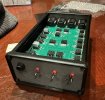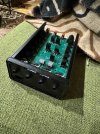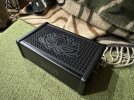JohnH
Well-Known Member
With the isolation transformer, I don't know how high you can make the resistors, particularly the 200Ohm, before it might start changing the tone due not to the amp and M2 but due to the way the resistors interact with the inductive reactance of the transformer.
But for the amp and the M2, if the 200 Ohm is found to be high enough that it has a negligible effect, there's not much to be gained by going higher. My simple run tested what I think will be the most sensitive condition , and the effect was very small. So it seems ok as it is. You can experiment though.
Your ohms readings look fine, all within 10% of 8 Ohms. The design is optimised for consistent tone and consistent attenuation steps, and also consistent output ohms (very important for tone!). The ohms work out best in the -7dB stages, but the -3.5dB and -14dB ones have to be allowed to vary a bit, in order for them to work as simple two-part stages. But that's ok because the amp never sees them directly. They are hidden behind Stage1, which keeps the ohms seen by the amp consistent enough.
For M4, Stage 1 can be switched to -3.5 so it has less effect of hiding whats downstream. So the -14 Stage has another part so it can be more accurate, but with a bit more complexity.
The main reason for the resistance tests is that it's a simple check that everything is wired up right, ahead of connecting an amp. If the ohms are all in the right range then it's safe to test.
But for the amp and the M2, if the 200 Ohm is found to be high enough that it has a negligible effect, there's not much to be gained by going higher. My simple run tested what I think will be the most sensitive condition , and the effect was very small. So it seems ok as it is. You can experiment though.
Your ohms readings look fine, all within 10% of 8 Ohms. The design is optimised for consistent tone and consistent attenuation steps, and also consistent output ohms (very important for tone!). The ohms work out best in the -7dB stages, but the -3.5dB and -14dB ones have to be allowed to vary a bit, in order for them to work as simple two-part stages. But that's ok because the amp never sees them directly. They are hidden behind Stage1, which keeps the ohms seen by the amp consistent enough.
For M4, Stage 1 can be switched to -3.5 so it has less effect of hiding whats downstream. So the -14 Stage has another part so it can be more accurate, but with a bit more complexity.
The main reason for the resistance tests is that it's a simple check that everything is wired up right, ahead of connecting an amp. If the ohms are all in the right range then it's safe to test.



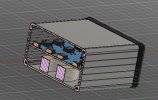
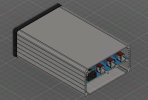
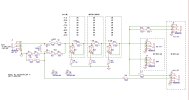

 I'll post an update when the rest of the parts are in and it's been through a round or two of ROCK.
I'll post an update when the rest of the parts are in and it's been through a round or two of ROCK. 